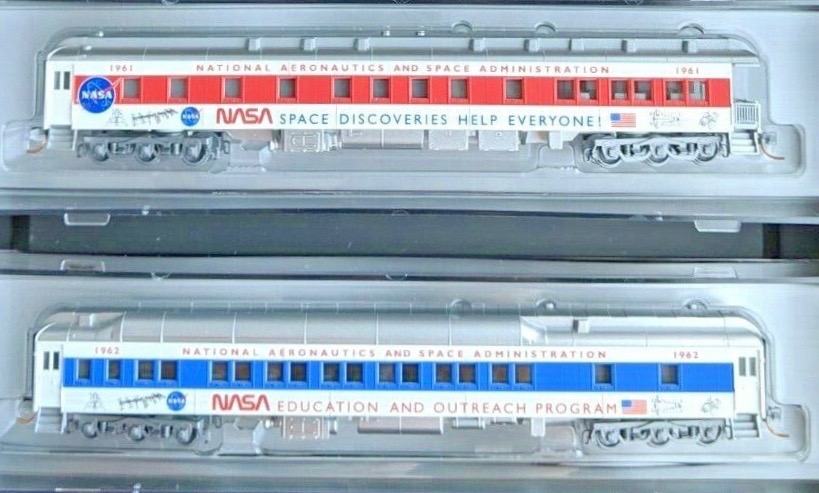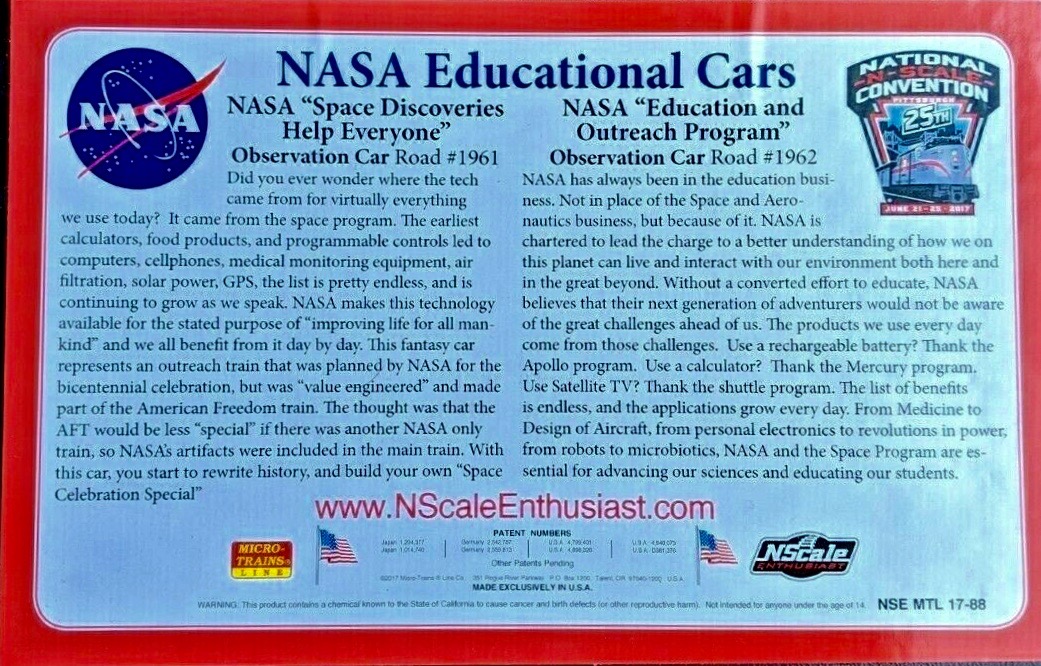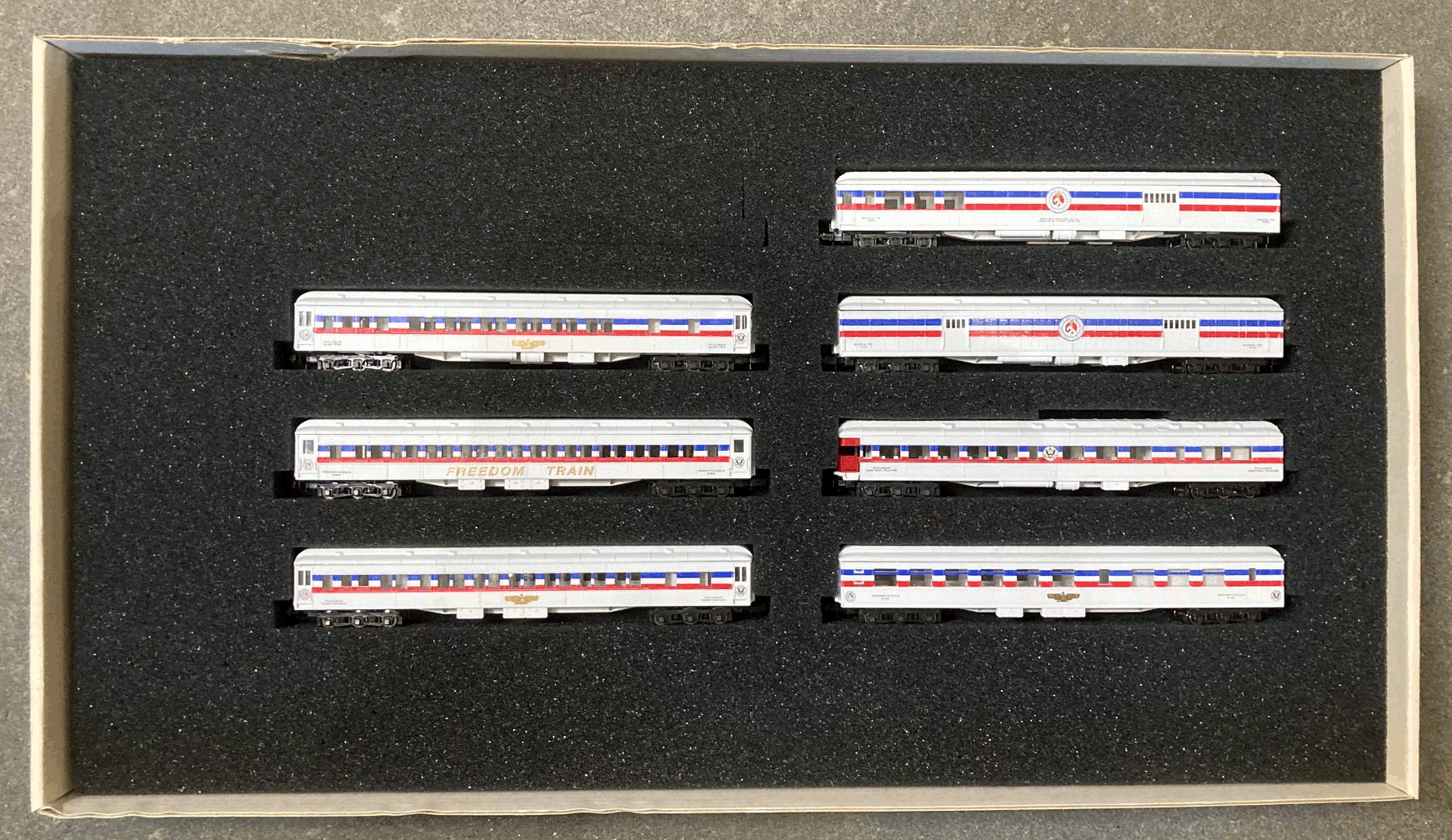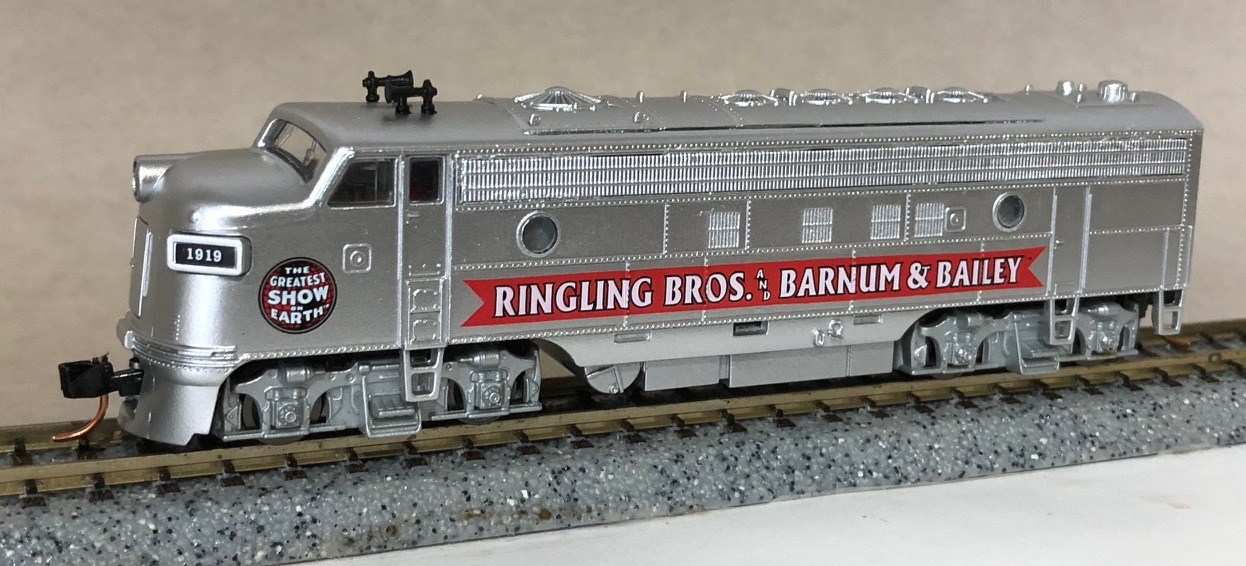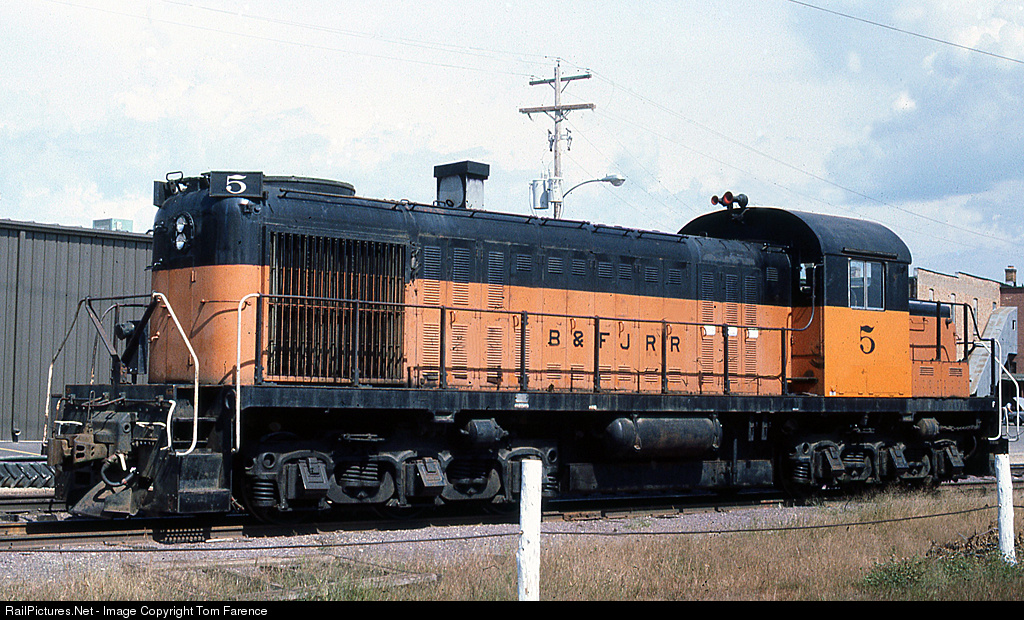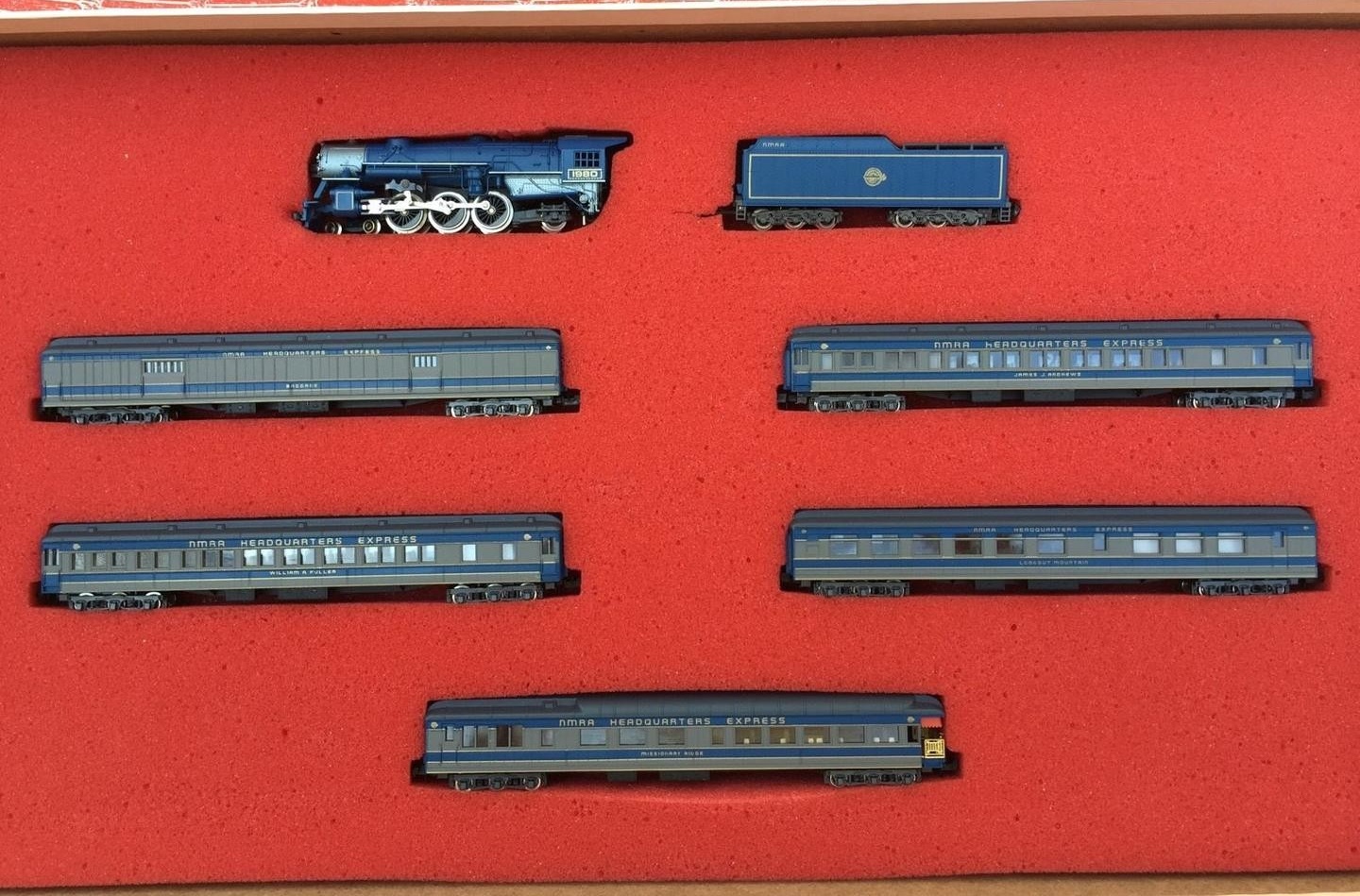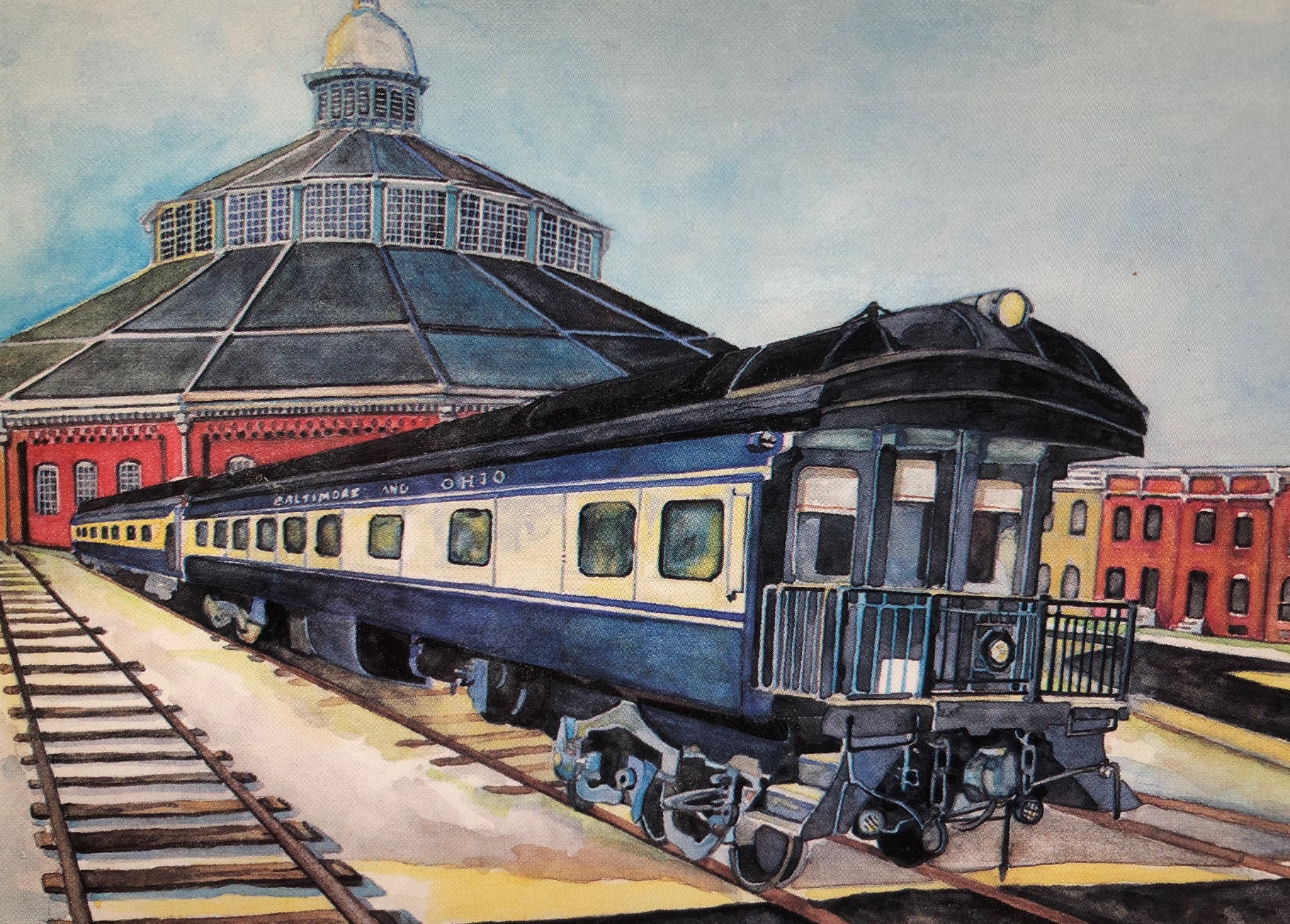Model Information: Micro-Trains first ventured into the Passenger Car business in 2009 with the introduction of the Heavyweight RPO car (series 140). Previously, they had purchased cars from other manufacturers which they redecorated themselves. They elected to go with the early 20th century 'Heavyweight' cars. This is perhaps because Kato was already doing such a fine job with the later streamlined, lightweight cars that were popular in the post-war period. Micro-Trains designed a new 3-axle truck specifically for these cars and they have been successful enough that the RPO was joined by two sleepers, an observation car, a dining car, a coach, a parlor car, two baggage cars and even a horse car.
Many of these cars appear in multi-unit sets (often in boxes). These sets are popular as they allow collectors to get several cars for a consist in one shot rather than waiting years for Micro-Trains to release enough variety of body styles in the desired livery to run a prototypical consist.
Many of these cars appear in multi-unit sets (often in boxes). These sets are popular as they allow collectors to get several cars for a consist in one shot rather than waiting years for Micro-Trains to release enough variety of body styles in the desired livery to run a prototypical consist.
Prototype History: Pullman was the leading producer of heavyweight coaches during the 1st half of the twentieth century. They were known for the quality and luxury of the passenger cars. The observation car was a common sight on heavyweight consists during 1920s and 1930s.
An observation car/carriage/coach (in US English, often abbreviated to simply observation or obs) is a type of railroad passenger car, generally operated in a passenger train as the last carriage, with windows on the rear of the car for passengers' viewing pleasure. The cars were nearly universally removed from service on American railroads beginning in the 1950s as a cost-cutting measure in order to eliminate the need to "turn" the trains when operating out of stub-end terminals.
An observation car/carriage/coach (in US English, often abbreviated to simply observation or obs) is a type of railroad passenger car, generally operated in a passenger train as the last carriage, with windows on the rear of the car for passengers' viewing pleasure. The cars were nearly universally removed from service on American railroads beginning in the 1950s as a cost-cutting measure in order to eliminate the need to "turn" the trains when operating out of stub-end terminals.
Road Name History: The National Aeronautics and Space Administration (NASA) is an independent agency of the executive branch of the United States federal government responsible for the civilian space program as well as aeronautics and aerospace research.
President Dwight D. Eisenhower established NASA in 1958 with a distinctly civilian (rather than military) orientation encouraging peaceful applications in space science. The National Aeronautics and Space Act was passed on July 29, 1958, disestablishing NASA's predecessor, the National Advisory Committee for Aeronautics (NACA). The new agency became operational on October 1, 1958.
Since that time, most US space exploration efforts have been led by NASA, including the Apollo moon-landing missions, the Skylab space station, and later the Space Shuttle. Currently, NASA is supporting the International Space Station and is overseeing the development of the Orion Multi-Purpose Crew Vehicle, the Space Launch System and Commercial Crew vehicles. The agency is also responsible for the Launch Services Program (LSP) which provides oversight of launch operations and countdown management for unmanned NASA launches.
From Wikipedia
The NASA Railroad operates 38 miles of track connecting the Kennedy Space Center at Cape Canaveral, Florida to a connection with the Florida East Coast Railroad. Traffic includes fuel, rocket components and other equipment switched in recent years with a trio of ex-TP&W SW1500’s. Traffic fell off considerably with the cancellation of the Space Shuttle program in 2011. NASA’s fleet of liquid helium and liquid oxygen tank cars were loaned to SpaceX in Texas and California. The railroad was inactive between 2013 and 2020 but limited service has resumed as private space launch companies have begun to use the Kennedy Space Center again.
President Dwight D. Eisenhower established NASA in 1958 with a distinctly civilian (rather than military) orientation encouraging peaceful applications in space science. The National Aeronautics and Space Act was passed on July 29, 1958, disestablishing NASA's predecessor, the National Advisory Committee for Aeronautics (NACA). The new agency became operational on October 1, 1958.
Since that time, most US space exploration efforts have been led by NASA, including the Apollo moon-landing missions, the Skylab space station, and later the Space Shuttle. Currently, NASA is supporting the International Space Station and is overseeing the development of the Orion Multi-Purpose Crew Vehicle, the Space Launch System and Commercial Crew vehicles. The agency is also responsible for the Launch Services Program (LSP) which provides oversight of launch operations and countdown management for unmanned NASA launches.
From Wikipedia
The NASA Railroad operates 38 miles of track connecting the Kennedy Space Center at Cape Canaveral, Florida to a connection with the Florida East Coast Railroad. Traffic includes fuel, rocket components and other equipment switched in recent years with a trio of ex-TP&W SW1500’s. Traffic fell off considerably with the cancellation of the Space Shuttle program in 2011. NASA’s fleet of liquid helium and liquid oxygen tank cars were loaned to SpaceX in Texas and California. The railroad was inactive between 2013 and 2020 but limited service has resumed as private space launch companies have begun to use the Kennedy Space Center again.
Brand/Importer Information: Micro-Trains is the brand name used by both Kadee Quality Products and Micro-Trains Line. For a history of the relationship between the brand and the two companies, please consult our Micro-Trains Collector's Guide.
Manufacturer Information:  Micro-Trains Line split off from Kadee Quality Products in 1990. Kadee Quality Products originally got involved in N-Scale by producing a scaled-down version of their successful HO Magne-Matic knuckle coupler system. This coupler was superior to the ubiquitous 'Rapido' style coupler due to two primary factors: superior realistic appearance and the ability to automatically uncouple when stopped over a magnet embedded in a section of track. The success of these couplers in N-Scale quickly translated to the production of trucks, wheels and in 1972 a release of ready-to-run box cars.
Micro-Trains Line split off from Kadee Quality Products in 1990. Kadee Quality Products originally got involved in N-Scale by producing a scaled-down version of their successful HO Magne-Matic knuckle coupler system. This coupler was superior to the ubiquitous 'Rapido' style coupler due to two primary factors: superior realistic appearance and the ability to automatically uncouple when stopped over a magnet embedded in a section of track. The success of these couplers in N-Scale quickly translated to the production of trucks, wheels and in 1972 a release of ready-to-run box cars.
Micro-Trains Line Co. split off from Kadee in 1990 to form a completely independent company. For this reason, products from this company can appear with labels from both enterprises. Due to the nature of production idiosyncrasies and various random factors, the rolling stock from Micro-Trains can have all sorts of interesting variations in both their packaging as well as the products themselves. When acquiring an MTL product it is very important to understand these important production variations that can greatly enhance (or decrease) the value of your purchase.
Please consult our Micro-Trains Collector's Guide

Micro-Trains Line Co. split off from Kadee in 1990 to form a completely independent company. For this reason, products from this company can appear with labels from both enterprises. Due to the nature of production idiosyncrasies and various random factors, the rolling stock from Micro-Trains can have all sorts of interesting variations in both their packaging as well as the products themselves. When acquiring an MTL product it is very important to understand these important production variations that can greatly enhance (or decrease) the value of your purchase.
Please consult our Micro-Trains Collector's Guide
Item created by: CNW400 on 2019-02-11 13:20:29. Last edited by CNW400 on 2020-09-25 10:15:37
If you see errors or missing data in this entry, please feel free to log in and edit it. Anyone with a Gmail account can log in instantly.
If you see errors or missing data in this entry, please feel free to log in and edit it. Anyone with a Gmail account can log in instantly.


